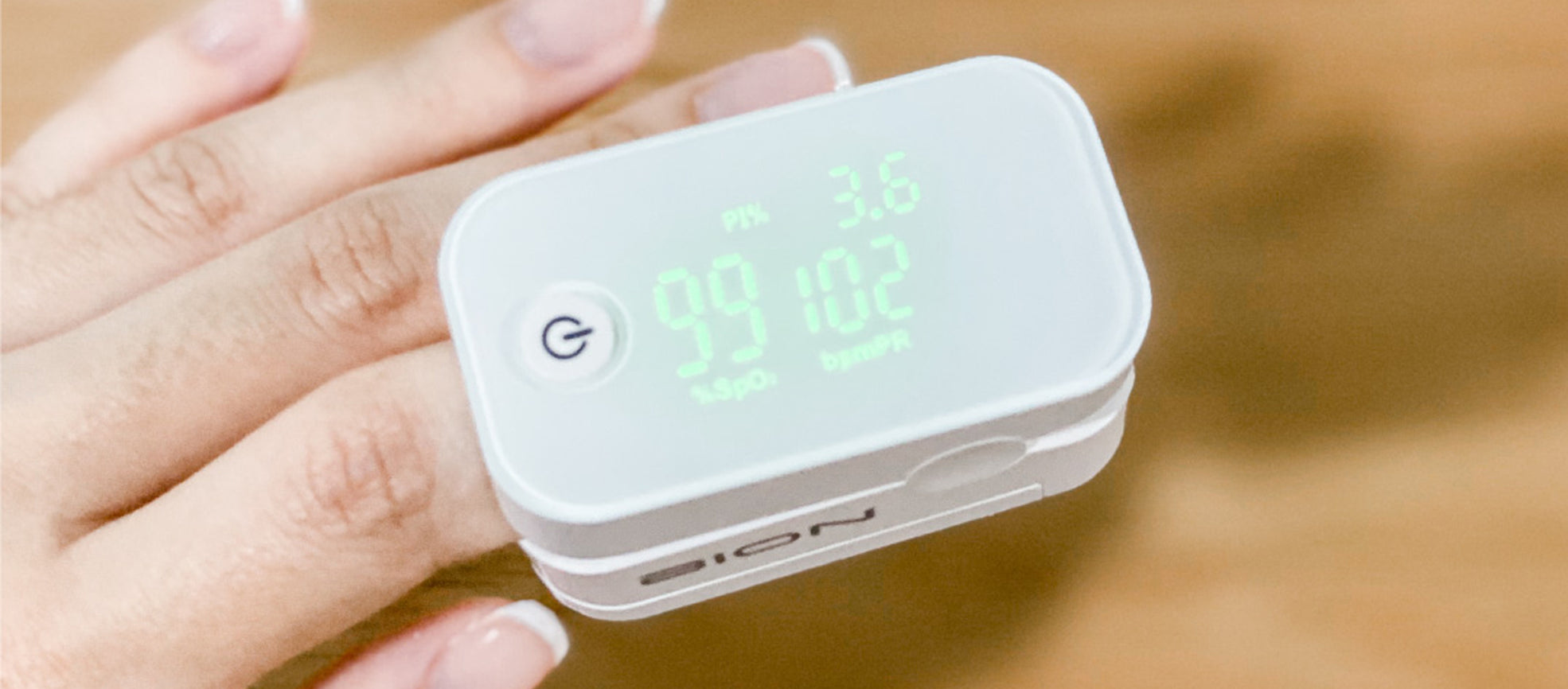Have you ever heard of a pulse oximeter? A pulse oximeter is a small device that measures the oxygen saturation of your blood. You might have noticed that it has been in the conversations on your social feed or news feed since the start of COVID-19. If you have hypoxemia or a heart/lung condition, you might already have one and using it regularly to monitor your condition at home.
What is hypoxemia and what is hypoxia
Your blood carries oxygen to the organs and tissues of your body. Hypoxemia is the condition of having low blood oxygen levels in your blood arteries, whereas hypoxia refers to low levels of oxygen in the tissues of your body.
There are several types of hypoxemias, and it can be caused by a variety of situations and health conditions.
Here are a few examples:
- Mountain climbers may experience low environmental oxygen at higher altitudes due to lower oxygen with increasing altitude.
- Asthmatic patients with inflamed, narrowed, and swelling airways that produces extra mucus may find it difficult to breathe.
- Anemic patients with Iron deficiency. When there is not enough iron in the blood stream, the rest of the body cannot get the amount of oxygen it needs.
These conditions can cause hypoxemia. A person with hypoxemia is likely to develop hypoxia due to the low levels of oxygen in the blood. However, the two conditions can sometimes, but not always occur together.
How to diagnose hypoxemia and hypoxia
There are several ways to diagnose hypoxemia and hypoxia. Typically, when visiting a doctor, your heart and lungs will be examined to check if there are any abnormalities. Your doctor may also check the colour of your fingernails, lips and skin.
There are a few methods to determine the oxygen level in your blood. For example, your doctor may perform an arterial blood gas test, where your doctor will take a blood sample from your artery or use pulse oximetry to assess the oxygen saturation in your blood.
Pulse oximetry is an easy, non-invasive and painless method to measure oxygen levels in your blood. The small clip-like device known as a pulse oximeter allows you to measure how much oxygen is in your blood.
A pulse oximeter is non-invasive, hence you can purchase it off the shelf and perform the test yourself.
Pulse Oximeter Readings
Oxygen Saturation (%SpO2)
%SpO2 refers to arterial oxygen saturation (% SpO2), the percentage of oxyhemoglobin (HbO2) relative to the total hemoglobin(Hb).
Beats per minute Pulse Rate (bmpPR)
bmpPR refers to the pulse rate. The number of pulse beats per minute.
Perfusion Index (PI)
The perfusion index indicates the pulse strength at the monitoring site.
To make informed patient management decisions, physicians often need to be aware of changes in peripheral perfusion and circulatory status (blood flow distribution to all parts of the body). Optimal pulse oximetry monitoring accuracy is dependent on the selection of a monitoring site (fingertip, hand, toe, foot, forehead, ear) characterized by good perfusion with oxygenated blood. The normal perfusion index (PI) ranges from 0.02 to 20% showing weak to strong pulse strength.
What’s normal and what’s below normal oxygen level
|
Value (%SpO2) |
What does it mean |
|
≥95 |
Normal for healthy individuals |
|
<95 |
Low for healthy individuals |
Table 1: Percentage value of arterial oxygen saturation and what does it mean.
Normal: A normal reading of blood oxygen level for healthy lungs falls between 95 to 100 percent.
Below normal (hypoxemia): Blood oxygen level that is below 95 percent. The lower the blood oxygen level, the more critical it is, which can lead to complications in body tissue and organs.
The absence of enough oxygen could lead to complications to vital organs such as the heart and brain.
What factors may affect the accuracy of measurement
The following factors may affect the accuracy of measurements:
- The oximeter is used in an environment involving high-frequency devices, such as high frequency electric knives and CT apparatuses.
- High ambient light intensity or direct exposure to strong light (such as beams from operating lamps or sunlight) during measurement.
- The probe of the oximeter is placed on the same arm as a blood pressure cuff, arterial catheter or intravenous injection.
- The user suffers from hypotension, severe vascular atrophy, severe anemia, or low oxygen.
- The user is in sudden cardiac arrest or shock state.
- The user is wearing nail polish or artificial nails.
How COVID-19 can cause “silent hypoxia”
You might have chance upon many articles regarding “silent hypoxia”, where there could possibly be infected asymptomatic persons experiencing dangerously low blood oxygen levels and yet not struggling to breathe.
According to biomedical engineer Jacob Herrmann, the “silent hypoxia” is likely caused by a combination of biological mechanisms that may occur simultaneously in the lungs of Covid-19 patients.
In his research using computational lung model and preliminary clinical data, one of his findings suggested that the virus has caused patients to lose the ability of restricting blood flow to already damaged tissues.
The researchers also found out that Covid-19 interferes with the normal ratio of air-to-blood flow that the lungs need to function normally and the type of mismatched happens in many respiratory illnesses, such as with asthma patients.
Despite his findings, Herrmann added that it is critical to understand all the possible reasons why a patient's blood oxygen might be low, to receive the proper form of treatment.
The bottom line
The organs and tissues in your body requires oxygen to function properly. Hypoxemia can lead to fatal complications if left untreated. If you experience shortness of breath, seek medical attention immediately.
Although a pulse oximeter might be able to provide valuable insights of your arterial oxygen saturation, improper application of pulse oximeters could also lead to false readings or create unnecessary alarm and a false sense of security.
Low oxygen saturation readings are also not specific to Covid-19 infection. Many medical conditions, including asthma, anemia and heart diseases can also affect blood oxygen level.
As such, a pulse oximeter should only be used as a tracking device, instead of a diagnostic one. If you are unsure of whether you should get a pulse oximeter to monitor your health, do consult your doctor and listen to their advice.




